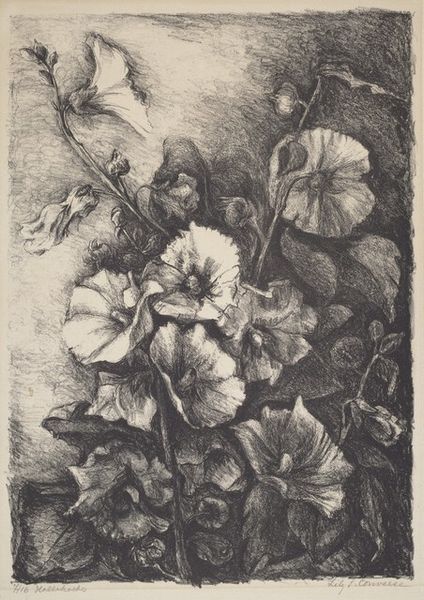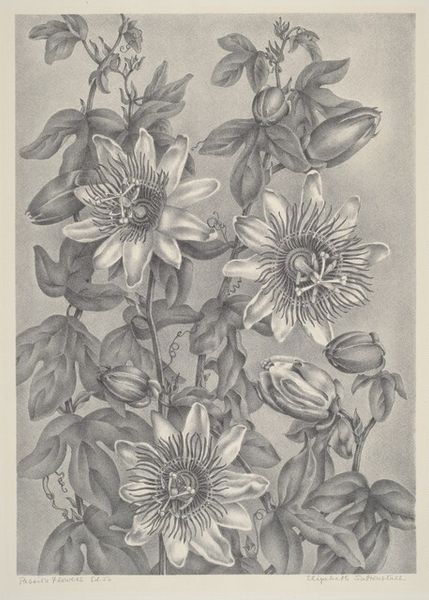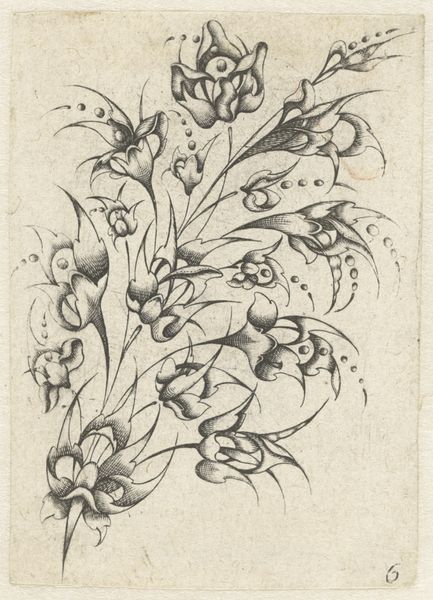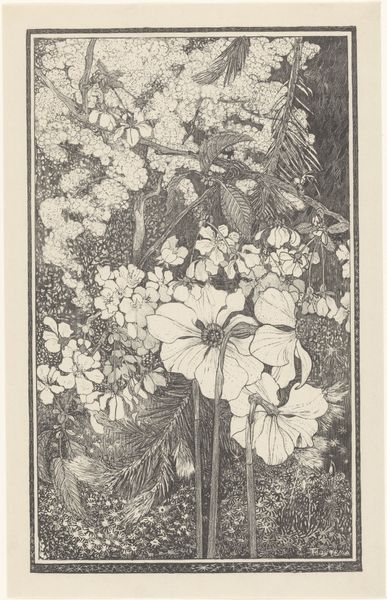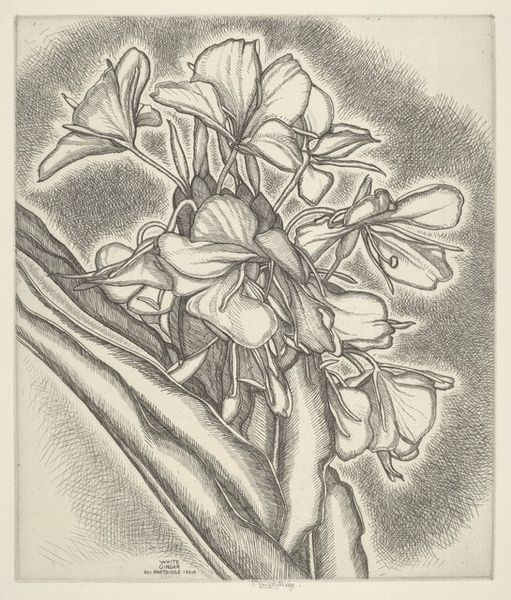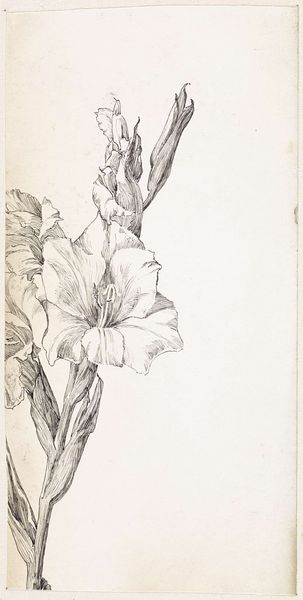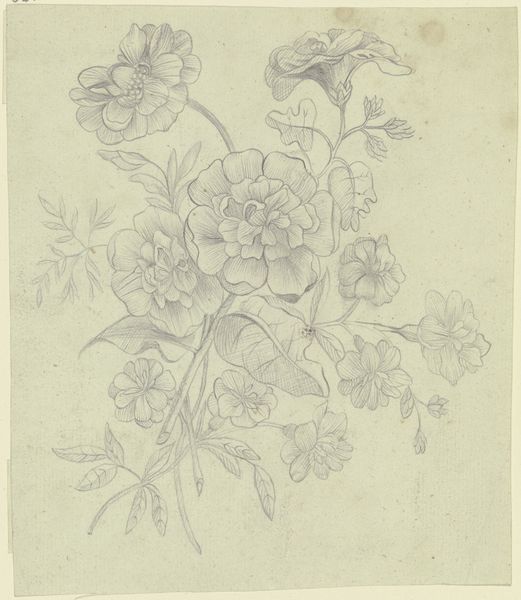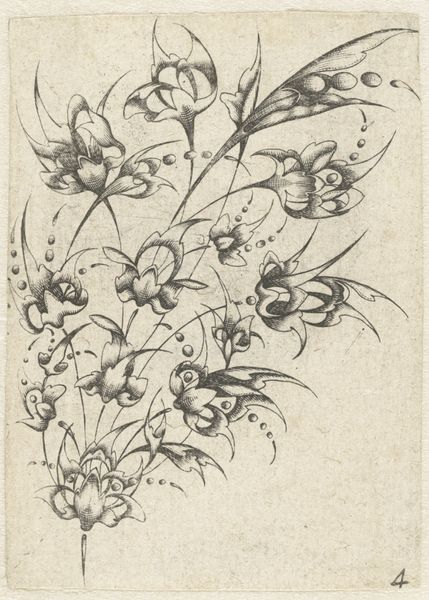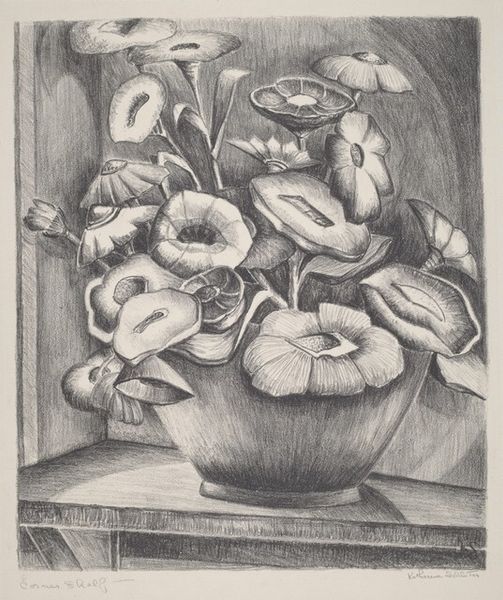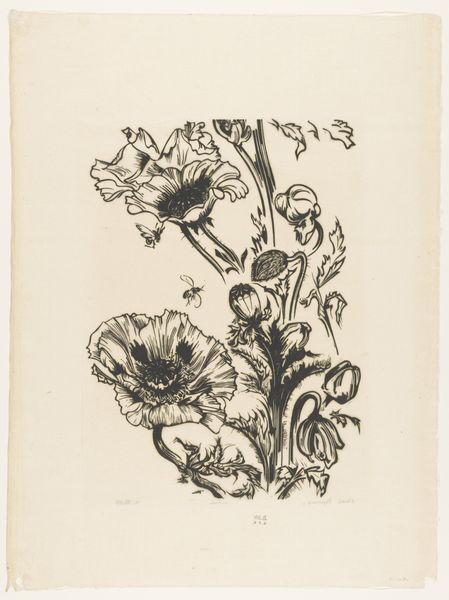
drawing, print, ink
#
drawing
# print
#
ink
#
realism
Dimensions: Image: 359 x 251 mm Sheet: 434 x 322 mm
Copyright: National Gallery of Art: CC0 1.0
Editor: Here we have Roi Partridge’s “Alamanda,” an ink print created between 1937 and 1942. The level of detail in the shading is incredible, it almost gives the flowers and leaves a velvety texture. How does a formalist critic approach a piece like this? Curator: First, we might consider the work as a totality; its surface acts as the primary site of meaning. Observe the distribution of tonal values. Dark, densely hatched areas define the background and lend mass to the foliage, setting off the blossoms. What effect do you believe this contrast creates? Editor: It really makes the flowers pop. Their forms become incredibly pronounced, almost sculptural. Curator: Precisely. Partridge exploits the graphic nature of ink to describe form, using line to generate a composition emphasizing shape and contrast, creating an engagement with light and shadow to further explore his subject matter. What do you observe regarding the composition itself? Editor: The way the leaves and flowers are arranged creates a sense of depth, and the detail is fascinating – each vein on the leaves, the delicate texture of the petals. The eye is guided around the image in a very pleasing way. Curator: Yes. Partridge uses line and shading to generate visual dynamism. It isn’t merely representational, but it investigates the potential within the printmaking process. The linear precision against the granular textures creates tension in the eye. How do you feel about that? Editor: I now see how limiting the work to a representational reading diminishes the overall power of the piece. I learned the work does not attempt to imitate nature. Instead, Partridge is leveraging the medium to enhance the visual impact of the Alamanda flower. Curator: Indeed. We can better comprehend Partridge’s artistry when we investigate the internal mechanics of his art. Focusing on these interactions shows how the piece moves beyond representation, arriving at the possibilities offered by artistic investigation.
Comments
No comments
Be the first to comment and join the conversation on the ultimate creative platform.
